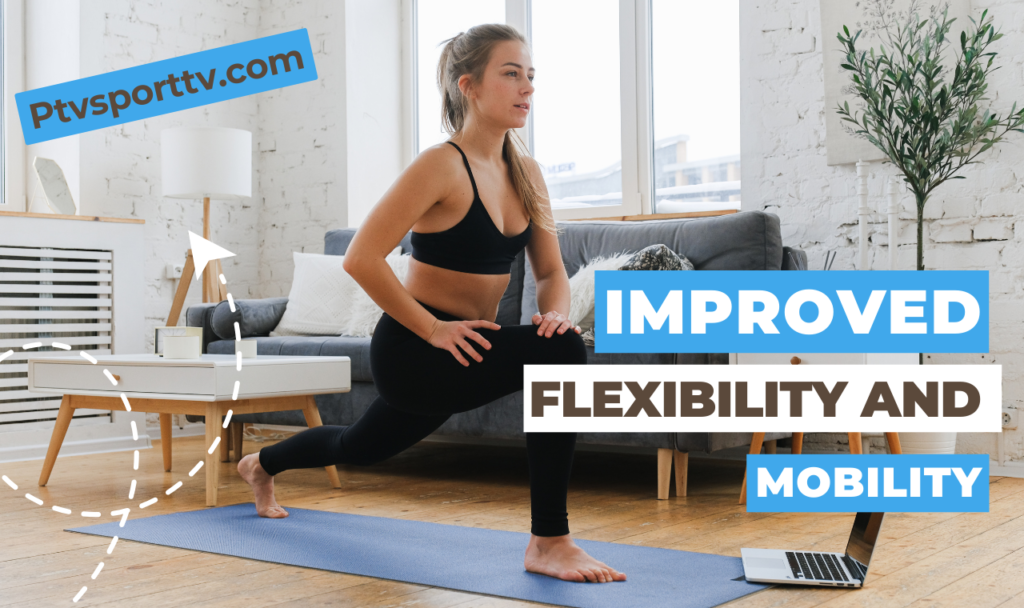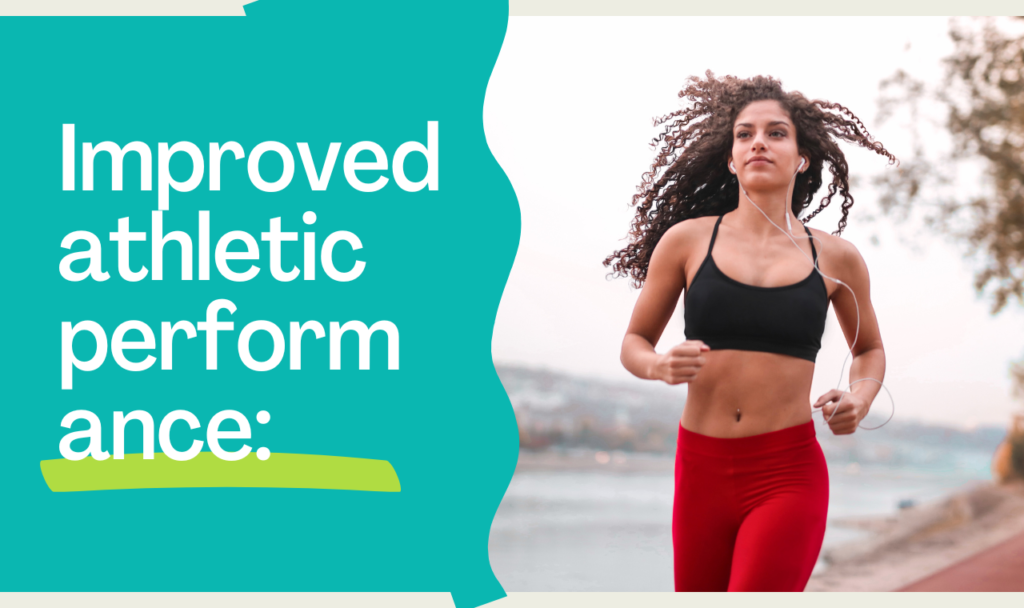Embarking on a 30-day fitness challenge from the comfort of your own home isn’t just a commitment to physical change. It’s a journey to a stronger, healthier version of you. This challenge is designed to be your companion in this transformational journey, offering a holistic approach that encompasses body, mind and spirit. 30 day fitness challenge workout at home.
Week 1: Foundation Building
Days 1-5: Total physical activity
Comprehensive Engagement:
- Muscle Activation: Starting your fitness journey with a full-body workout serves as a strategic and effective way to activate muscles that may be underused or inactive.
- Joint Mobility: These exercises are designed to engage large muscle groups simultaneously, providing a comprehensive and balanced foundation for your fitness routine. Here’s a breakdown of why it’s important to start with a full-body workout.
Time Saving Advantage:
- Optimal workout duration: A full-body workout often allows you to make significant fitness gains in a shorter amount of time.
- Increased compliance: Short, intense sessions are more likely to fit into busy schedules, increasing adherence to your fitness routine.
Functional Fitness:
- Real-life application: These exercises reflect natural, active movements, improving daily activities and overall functionality.
- Better Coordination: Coordinating the movements of the entire body increases overall body awareness and coordination.
Progressive adaptation:
- Adjustable Intensity: Whether you’re a beginner or a seasoned enthusiast, full-body workouts can be scaled in intensity, allowing for gradual progression.
- Variety of Exercises: Variety of exercises keeps your routine busy and prevents plateaus in your fitness journey.
- Mental focus:
- Mind-Body Connection: Integrating different muscle groups demands mental focus, fostering a stronger mind-body connection.
- Less Boredom: Variety in workouts reduces monotony, making your workout more mentally stimulating.
Days 6-7: Mental rest
Incorporating light activities such as yoga or a leisurely walk into your fitness routine offers numerous benefits, promoting a balanced and sustainable approach to physical fitness. Here’s a breakdown of why it’s important to engage in these activities
Stress Reduction and Relaxation:
- Yoga’s mind-body coordination: Yoga, with its emphasis on controlled breathing and mindful movements, promotes relaxation and reduces stress.
- A leisurely walk: A leisurely walk allows for a peaceful connection with nature, which has a calming effect on the mind.
Improved flexibility and mobility:
- Yoga’s Stretching Dynamics: Yoga poses include gentle stretching, increasing flexibility and promoting better range of motion.
- Joint mobility of walking: Regular walking supports joint health, especially in the knees and hips, increasing overall mobility.
Active Recovery:
- Yoga for muscle recovery: Gentle yoga serves as an excellent form of active recovery, helping muscles repair and reducing post-workout soreness.
- Restorative effect of walking: A leisurely walk promotes blood flow to tired muscles, which helps in the recovery process.
Access and Inclusion:
- Adaptability of Yoga: Yoga can be adapted to different fitness levels and can be practiced anywhere, making it accessible to people of all ages.
- The Universality of Walking: Almost anyone can engage in walking, making it a comprehensive and versatile activity for people of all fitness levels.
Mental clarity and focus:
- Yoga Mindfulness: Yoga encourages mindfulness, promoting mental clarity and focus by bringing attention to the present moment.
- Benefits of walking meditation: Walking, especially in a quiet environment, provides a meditative experience, which increases mental well-being.
Consistency and Durability:
- Enjoyable routine: Lighter activities are often more enjoyable, increasing the likelihood of consistent participation in your fitness routine.
- Reduced risk of burnout: Mixing in light activities prevents burnout and supports long-term adherence to your overall fitness plan.
Social Communication:
- Group Yoga Sessions: Yoga classes offer a social component, allowing you to connect with others who share similar wellness goals.
- Community Walks: Participating in a community walk provides an opportunity for social interaction, turning exercise into a communal experience.
Suitability for all fitness levels:
- Yoga Modification: Yoga poses can be modified to accommodate different fitness levels, making it suitable for beginners and experienced practitioners alike.
- Gradual progression of walking: Walking can be adapted to different speeds, allowing for a gradual progression as your fitness level improves.
Week 2: Speed up the burn.
Days 8-14: Cardio Fusion
Raising your heart rate through short intervals of intense exercise is a powerful strategy for increasing cardiovascular fitness and achieving a variety of health benefits. Let’s consider the importance of incorporating high-intensity intervals into your exercise routine.
Improved Cardiovascular Fitness:
- Effective Cardiovascular Conditioning: Intense exercises challenge your heart to work harder, improving cardiovascular endurance and conditioning.
- Increased oxygen consumption: High intensity prompts your body to use more oxygen, improving the efficiency of oxygen delivery to muscles and organs.
Calorie burning and weight management:
- Metabolic Boost: Intense workouts raise your metabolism, which in turn keeps burning calories long after the workout is over.
- Effective fat loss: High-intensity intervals have been shown to be effective for fat loss, making them valuable for weight management.
Time Effective Exercise:
- Short duration, maximum impact: High-intensity workouts often involve shorter time commitments, making them suitable for people with busy schedules.
- Best for interval training: short bursts of intensity followed by rest or low-intensity intervals follow the principles of interval training, known for its efficiency.
Improved aerobic and anaerobic capacity:
- Aerobic endurance: High-intensity intervals increase aerobic capacity, increasing your ability to sustain activities that require oxygen.
- Anaerobic Performance: These intervals also contribute to increasing anaerobic capacity, beneficial for activities that require short bursts of energy.
Types of Plateaus and Avoidance:
- Muscle confusion: Adding intense exercises regularly introduces variety, which prevents your body from adapting too quickly and hits fitness plateaus.
- Continuous Challenge: The challenging nature of high-intensity exercise ensures continuous stimulation for muscular and cardiovascular development.
Elevated Endorphin Release:
- Feel-good hormones: Vigorous workouts stimulate the release of endorphins, the body’s natural mood enhancers, which promote a positive and energetic mindset.
- Stress reduction: The release of endorphins can help reduce stress and improve mental well-being.
Versatility in Training Methods:
- Sprint Intervals: Add sprint intervals to running or cycling.
- Bodyweight Exercises: Incorporate high-intensity bodyweight exercises such as burpees, jump squats, or mountain climbers.
- Interval training programs: Follow structured interval training programs that alternate between intense and recovery periods.
Adaptable to fitness levels:
- Adjustable Intensity: The intensity of the high-intensity intervals can be adjusted to individual fitness levels, ensuring inclusion.
- Gradual progression: Beginners can start with small bursts of intensity and gradually increase the duration and intensity as fitness improves.

Days 15-16: Rejuvenation
Developing resilience and resilience is a holistic approach to building a strong and adaptive mindset that can navigate life’s challenges with grace and effectiveness. Let’s explore the importance of developing mental flexibility and resilience.
Adaptation to Change:
- Coping with Uncertainty: Resilience prepares individuals to adapt to unexpected changes, helping them navigate uncertainty without becoming stressed.
- Openness to new ideas: Flexibility promotes an open-minded approach, making it easier to embrace new ideas and perspectives.
Stress Management:
- Coping Mechanisms: Resilience enables the development of effective coping mechanisms, reducing the effects of stress on mental health.
- Mindful Responses: Resilience encourages mindful responses to stress, fostering a measured and structured approach to challenges.
Emotional regulation:
- Embracing Emotions: Resilience involves acknowledging and understanding emotions, developing a healthy relationship with one’s emotional state.
- Balanced Responses: Resilience allows for balanced responses to emotions, preventing extreme reactions and promoting emotional stability.
Problem Solving Ability:
- Creative Thinking: A flexible mindset encourages creative problem solving, finding diverse solutions to challenges.
- Adaptive Strategies: Resilience supports the development of adaptive strategies to overcome obstacles, enhance problem-solving skills.
Increased confidence:
- Overcoming setbacks: Resilience enables individuals to bounce back from setbacks, which increases confidence in their abilities.
- Learning from failures: Resilience encourages a positive outlook on failures, viewing them as opportunities for growth and learning.
Better Decision Making:
- Analytical thinking: Resilience promotes analytical thinking, allowing people to make informed decisions even in difficult situations.
- Real-Time Adjustment: Flexible enables real-time adjustments based on decisions made in changing conditions.
Better relationships:
- Empathy: Resilient people often show empathy, understand others’ points of view and develop strong connections.
- Conflict Resolution: Resilience supports effective conflict resolution by allowing individuals to consider multiple perspectives and find common ground.
Maintaining mental health:
- Reducing anxiety: Resilience helps reduce anxiety by promoting a more optimistic outlook on challenges.
- Fostering Mindfulness: Resilience involves fostering mindfulness, which is beneficial for mental health and well-being.
Week 3: Sculpt and strengthen.
Days 17-21: Targeted Workouts
Increase in functional strength:
- Daily Movement: Core strength is fundamental to everyday movements such as bending, lifting, and twisting, making these activities more manageable and less prone to injury. 30 day fitness challenge workout at home.
Improved athletic performance:
- Power Generation: A strong core is essential for power generation in a variety of athletic activities, from running to weightlifting.
Reduced risk of injuries:
- Joint Support: Core stability provides better support for joints, reducing the risk of injuries during physical activity.
Better breathing and lung capacity:
- Diaphragmatic engagement: Core exercises often involve diaphragmatic breathing, promoting optimal lung capacity and respiratory function.
Smooth appearance:
- Toned Abdominals: Strengthening the core muscles contributes to toned abdominal muscles, creating a smoother and sculpted appearance.
Better Digestion:
- Promoting healthy organ function: Core exercises stimulate the muscles surrounding the digestive organs, potentially aiding digestion.
Increased metabolism:
- Muscle mass: Building muscle through core exercises can increase metabolic rate, aid in weight management. 30 day fitness challenge workout at home.
Improved flexibility:
- Full range of motion: A strong core enables a greater range of motion in different activities, improving overall flexibility.
Better coordination:
- Nerve Connection: Core exercises increase the connection between the nervous system and muscles, improving overall coordination.
Days 22-23: Active Recovery
Cardiovascular Health:
- Swimming: A full body workout, swimming increases cardiovascular endurance, strengthens the heart and improves circulation.
- Cycling: Effective for cardiovascular health, cycling improves heart and lung function, reducing the risk of heart disease.
Low impact exercise:
- Swimming: The high velocity of the water reduces the impact on the joints, making it ideal for people with joint problems or those recovering from injuries.
- Cycling: Being a non-weight bearing exercise, cycling reduces stress on the joints, suitable for people with joint sensitivity.
Muscle engagement:
- Swimming: It engages different muscle groups, which improves overall muscle strength and endurance.
- Cycling: Targets the leg muscles, especially the quadriceps, hamstrings and calves, increasing lower body strength.
Weight Management:
- Swimming: Burns calories efficiently, helps with weight management and promotes a healthy body composition.
- Cycling: Supports weight loss or maintenance through calorie expenditure during rides. 30 day fitness challenge workout at home.
Mental health:
- Swimming: The rhythmic nature of swimming and the meditative quality of being in the water help relieve stress and improve mood.
- Cycling: Outdoor cycling provides exposure to nature and fresh air, which has a positive effect on mental health. 30 day fitness challenge workout at home

Week 4: Finish Strong
Days 24-28: Power Intervals
Benefits of Advanced Bodyweight Exercises
- Increase strength: Higher bodyweight exercises, such as one-arm push-ups, pistol squats, and handstand push-ups, target larger muscle groups, promoting strength development.
- Functional Fitness: Many modern bodyweight exercises mimic real-life movements, developing the functional strength necessary for everyday activities.
- Core activation: Exercises like the dragon flag and hanging leg raises intensely engage the core, which contributes to core strength and stability.
- Minimal Equipment: By eliminating the need for equipment, modern bodyweight exercises offer an easy and cost-effective way to challenge your fitness level.
- Balance and coordination: Balancing on one limb or performing complex movements improves overall balance and coordination.
- Calisthenic Mastery: Mastering advanced calisthenics creates a sense of accomplishment and boosts confidence in your physical abilities.
- Metabolic Boost: High-intensity bodyweight exercises increase heart rate and metabolism, which aids in fat loss and cardiovascular health. 30 day fitness challenge workout at home.
Considerations and suggestions:
- Progress: Gradual progress is key.
- Form over Reps: Prioritize proper form over number of repetitions. Standard movements prevent injury and ensure effective muscle engagement.
- Warm Up Properly: Prepare your body with a thorough warm up to increase blood flow, increase flexibility and reduce the risk of injury.
- Rest and Recovery: Allow adequate time for recovery between sessions. Overtraining can hinder growth and increase the risk of injuries.
- Consult a Professional: If you are new to advanced bodyweight exercises or have a pre-existing condition, consult a fitness professional or healthcare provider for guidance.
- Variety: Include a variety of exercises to target different muscle groups and prevent plateaus in your fitness journey.
- If an exercise causes pain (not to be confused with discomfort), reevaluate your technique or seek guidance. 30 day fitness challenge workout at home.

